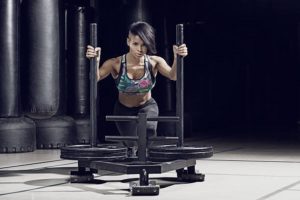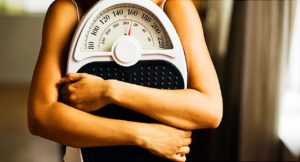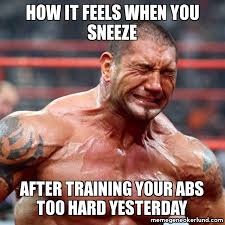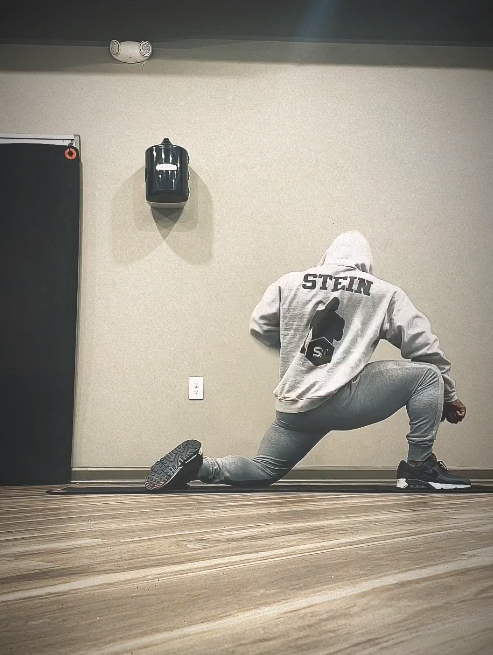Correcting the Mis-education of Women’s Weight Loss
3 Myths that Need to be Cleared Up
Weight loss is no easy feat…. Especially for women. If you add in all the fad diets, tummy teas, detox concoctions, waist trainers, and dudes that don’t know what the hell they are talking about but use fitness as an excuse to hit on you, well then, its damn near impossible to accomplish.
Let’s cut to the chase ladies. There is no magical equation for effort-free weight loss. It takes time, effort, and consistency to achieve the body you want. I am going to clear up some common myths about weight loss to help clear your path to being the best version of yourselves. There are 3 common myths that I will debunk so that you never fall prey to any of the things we listed above again. Ready!! Here we go.
Myth #1 – “I will lose more weight by doing a slow walk…”
A common misconception amongst many female fitness enthusiasts is that steady-state cardio in the “fat burning zone” is ideal for weight loss. Spending hours on the treadmill may seem like it’ll get you that flat midsection and firm legs—more minutes, more calories, right? Wrong!! While steady-state cardio has many benefits, you are not reaching a third of your fat burning potential. If you are wondering how to change that to get the maximum effect of cardio, I’ll tell you. Try HIIT!!
HIIT or High Intensity Interval Training elicits the same health benefits as steady-state cardio, but can lead to even greater improvements in body composition, metabolism, and blood pressure in a much shorter amount of time. And you definitely burn more calories when you do it! Additionally, the afterburn effect, or EPOC, can last anywhere from 10 to 72 hours. Studies also show that the magnitude and duration of EPOC depends mainly on several factors: Type of exercise (cardio or weightlifting) and Workout intensity.
HIIT can be implemented in a variety of ways, but it’s always built on intervals. You’ll perform work at max effort for a number of reps, rounds, or minutes, and then you’ll rest. Then, you’ll repeat the interval at max effort again.
Because HIIT is harder on your body than steady-state cardio, you will require adequate rest to gain the most benefits, so don’t feel bad for taking a day off. A good rule of thumb is to decrease the number of days you exercise as the load gets heavier. For example, HIIT using just your body weight can be done 3-5 days a week for 20-30 minute sessions.

If you’re considering a weighted circuit however, limit yourself to 2-3 days per week for 15-20 minute sessions.
Myth #2 – “Lifting weights will make me look like a man….”
If I had a nickel for every time I’ve heard this comment. Does this woman look like a man to you?

This is Wendy Ida. She is 61 years old and she looks phenomenal! She achieved this body by maintaining a balanced diet and HITTING THE WEIGHTS!
Women’s resistance training has a long history of misconceptions and misunderstandings. For decades, women were advised to steer clear of dumbbells weighing more than 10 pounds, or else they would inevitably develop Arnold-like proportions.
Research has consistently debunked this myth. More recently, there has been greater awareness of the benefits of weightlifting for women. These benefits extend from improving mood to improving posture, with tons of health advantages in between. But most important of all, FAT LOSS!!
While it may seem counterintuitive to follow many of the bodybuilding principles as men, it has been proven that women using heavier weights during their training sessions can have a more favorable outcome for weight loss. Not only does heavy resistance training create a greater calorie expenditure for up to 24 hours post-workout, but it can also help you add muscle mass, which helps you burn more calories at rest!
Now to dispel that large muscle myth – Ladies please read this and read it again! Lifting heavier weights in rep ranges of 8-12 reps per set may produce some hypertrophy (muscle growth), but the main outcome will be stronger muscles, NOT visibly larger ones. The truth is that it’s a lot harder than you think to “get muscular.” Your caloric intake would have to be considerably more than your total energy expenditure on a daily basis; not to mention your protein intake would have to be high as well. The majority of women do not intentionally maintain this type of dietary structure, especially if they are working to lose weight.
In other words ladies, you have nothing to fear. And honestly, adding just a little weight training to your exercise regimen might be exactly what you need! Aside from burning calories even at rest, there is nothing more beautiful than a gorgeous woman that lifts weights!!
Myth #3 – “Eating less food or fewer times a day will make me lose weight!”
Excuse my French, but what a F$%&ing CROCK!
Women are the most beautiful and intelligent creatures to walk this planet; and I’m not afraid to admit that in most cases smarter than men! However, this is the silliest mentality to have about nutrition! The part that gets me is that women will do research about anything else they want to know but when it comes to dieting, many women refuse to take an educated approach! OK…Rant Over!

Eating less does not create the need to burn body fat. Instead, it creates the need for the body to slow down. Contrary to popular opinion, the body hangs on to body fat. Instead, it burns muscle tissue, and that worsens the underlying cause of fat storage. Only as a last resort, if the body has no other option, it may also burn a bit of body fat.
Why does the body hang on to body fat and burn muscle? Metabolic Starvation!!!!
What does your metabolism want more of when it thinks you are starving? Stored energy.
What is a great source of stored energy? BODY FAT!!
So when your metabolism thinks you are starving, do you think it wants to get rid of or hold on to body fat? IT WANTS TO HOLD ON!!!!!
Next, what does our metabolism want less of when we are starving? It wants less tissue (which burns a lot of calories). What type of tissue burns a lot of calories? Muscle tissue. So, when our metabolism thinks we are starving, it gets rid of calorie-hungry muscle tissue. Studies show that up to 70% of the weight lost while eating less comes from burning muscle—NOT BODY FAT!
Burning all that muscle is a direct result of starving yourselves which now leads to more body fat—not less—over the long term. So now as soon as you stop starving yourselves, you have all the calories you used to have but need less of them, thanks to all that missing muscle and your slowed-down metabolism. Now your metabolism sees eating a normal amount as overeating and creates new body fat.
Not to add insult to injury but this lack of nutrition and slower metabolic rate also leads to nutrient deficiencies. Reductions in micronutrients like iron, vitamin D, and calcium won’t just effect your performance and energy levels in the gym, but can also affect your hormone balance and cause womanly problems that you don’t want to even begin to worry about.
The good news is this problem can be fixed. The first thing that has to be done is determining your calorie intake for maintaining your current body weight. Once you get that number, you subtract a small amount of calories from your total. Experts typically recommend reducing your daily intake by about 300-500 calories per day below “maintenance level,” or the amount you need to stay at your current weight. This decrease in calories converts to about 1/2 pound to a pound of weight loss per week. Although you may feel like you can “do more,” slow, steady progress is much healthier—and easier to keep up.
The best way to track what you eat so you know you’re hitting your daily caloric goal (hopefully with healthy food) is with a food diary. There are numerous free apps you can download such as MyFitnessPal or Lose It! to help track. There are also numerous meal prep services that will design a dietary plan for you according to your nutrition needs. If you want to look into those download the Gymbag app. It has multiple listings for quality and cost effective options for meal prep companies.
Ladies let me go on record as saying, you are perfect just the way you are. But, if you want to be healthier, or in better shape, please make a more informed decision about your approach to achieving this. Hopefully the information I provided will help you along your path. Leave me comments and let me know what you think or if this has helped you! Eat smart!! Train hard!!
References
- Boutcher, S. H. (2010). High-intensity intermittent exercise and fat loss. Journal of Obesity, 2011.
- Wisløff, U., Ellingsen, Ø., & Kemi, O. J. (2009). High-intensity interval training to maximize cardiac benefits of exercise training? Exercise and Sport Sciences Reviews, 37(3), 139-146.
- Swain, D. P., & Franklin, B. A. (2006). Comparison of cardioprotective benefits of vigorous versus moderate intensity aerobic exercise. The American Journal of Cardiology, 97(1), 141-147.
- Kraemer, W. J., Nindl, B. C., Ratamess, N. A., Gotshalk, L. A., Volek, J. S., Fleck, S. J., … & Hakkinen, K. E. I. J. O. (2004). Changes in muscle hypertrophy in women with periodized resistance training. Medicine and Science in Sports and Exercise, 36(4), 697-708.
- Szivak, T. K., Hooper, D. R., Dunn-Lewis, C., Comstock, B. A., Kupchak, B. R., Apicella, J. M., … & Kraemer, W. J. (2013). Adrenal cortical responses to high-intensity, short rest, resistance exercise in men and women. The Journal of Strength & Conditioning Research, 27(3), 748-760.
- Kelley, G. A., Kelley, K. S., & Tran, Z. V. (2001). Resistance training and bone mineral density in women: a meta-analysis of controlled trials. American Journal of Physical Medicine & Rehabilitation, 80(1), 65-77.
- Josse, A. R., Tang, J. E., Tarnopolsky, M. A., & Phillips, S. M. (2010). Body composition and strength changes in women with milk and resistance exercise. Medicine and Science in Sports and Exercise, 42(6), 1122-1130.
- Josse, A. R., Atkinson, S. A., Tarnopolsky, M. A., & Phillips, S. M. (2011). Increased consumption of dairy foods and protein during diet-and exercise-induced weight loss promotes fat mass loss and lean mass gain in overweight and obese premenopausal women. The Journal of nutrition, 141(9), 1626-1634.
- Frestedt, J. L., Zenk, J. L., Kuskowski, M. A., Ward, L. S., & Bastian, E. D. (2008). A whey-protein supplement increases fat loss and spares lean muscle in obese subjects: a randomized human clinical study. Nutrition and Metabolism (Lond), 5(1), 8.
- Sellahewa, L., Khan, C., Lakkunarajah, S., & Idris, I. (2015). A systematic review of evidence on the use of very low calorie diets in people with diabetes. Current Diabetes Reviews[epub ahead of print].






Thank you for the insight. You answered a few questions I didn’t know I had running around in my head.
I actually thought just like this…. guess u have alot to learn
I’m trying to find a good mix of a routine to burn this fat but gain weight in muscle also..the struggle is real
thanks for reading the post.. are you currently lifting weights as part of your regimen
Yes..weight lighting and some cardio